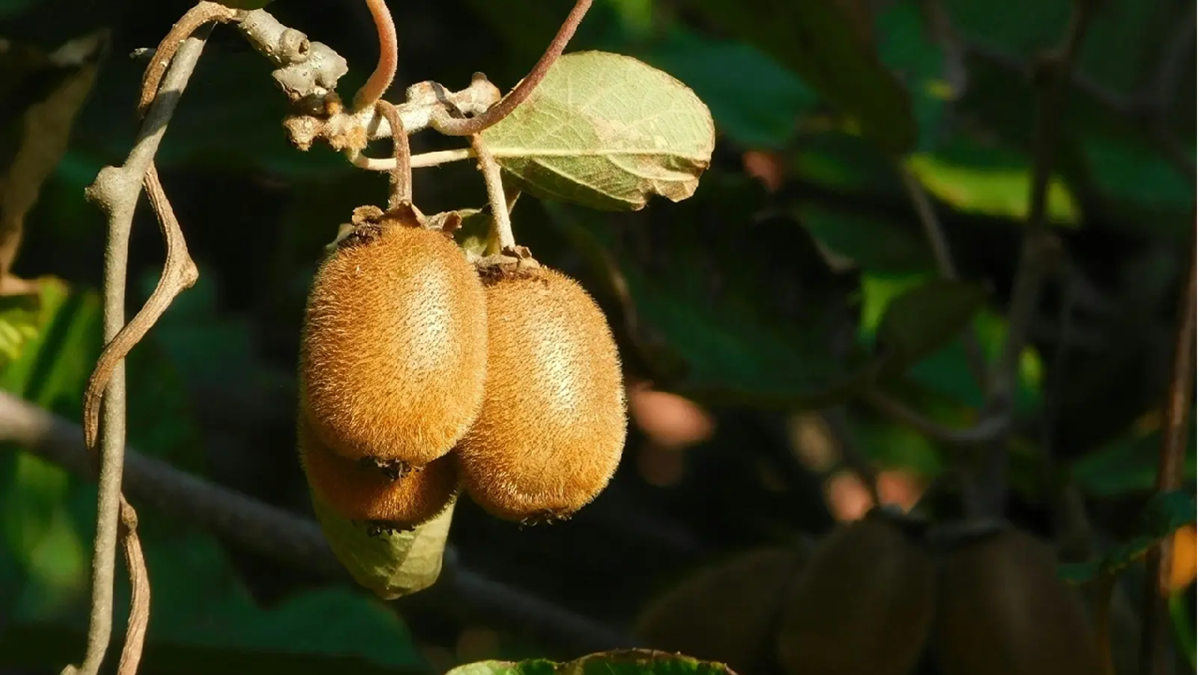Measurements
Improving kiwifruit quality
Kiwifruits are one of the newer temperate fruits whose widespread cultivation began around a century ago. The fruit is growing in popularity due to the novelty of the new cultivars? appearance, taste, and nutritional value. Since kiwifruit is a relatively new crop, research into postharvest management is needed. However, decades of work have given us enough information to improve quality. Continue reading to explore this topic. Quality parameters and monitoring methods Kiwis are climacteric fruits harvested when they are mature but not ripe. Fruit quality parameters, such as firmness, sweetness, color, and dry matter, are used singly or in combination. The traditional quality parameters for estimating harvest and maturity were firmness and sweetness. Dry matter Content is quickly becoming the most critical maturity index as it is correlated to soluble solids content (SSC) and can predict consumer satisfaction. According to the University of California (UC), the maturity indices for harvest for good quality fruits are as follows: - Dry matter content around 16% - A minimum sweetness/SSC of 6.5% - Flesh firmness of 14 pounds force - Late-harvest kiwifruits have more firmness and SSC than early-harvested kiwifruits. According to UC, good quality ready-to-eat kiwifruits should have an SSC of 14% and a flesh firmness of 2-3 pounds. They should also be free of internal injury, decay, external scars, bruises, sunscald, and growth cracks. Earlier, firmness was measured by penetrometers, SSC by refractometers, and dry matter by the oven method. Unfortunately, all these methods are destructive and time-consuming. Since fruit quality has to be monitored and measured several times before harvest to establish maturity and later in postharvest storage and transport, newer tools like non-destructive Near-Infrared (NIR) spectroscopy devices are becoming popular. The devices scan the fruit with NIR, and state-of-art Chemometrics analyzes the generated spectra to give results that can be read from the devices. Tools such F-751 Kiwifruit Quality Meter from Felix Instruments- Applied Food Science allow accurate field estimation within seconds. In addition, the device comes equipped with GPS so that farmers can use it to create fruit harvesting maps that can advise future harvest management. The NIR spectroscopy allows non-destructive measurement of internal and external color to track maturity and ripeness for green, red, and gold kiwifruits. The F-751 can measure SSC, acidity, external and internal color, and dry matter content simultaneously. Since the sweetness and acidity balance are also critical criteria for consumers, the same NIR spectroscopy tools are also helpful for monitoring ripening during storage, transport, and retailing. Storage and transport conditions Harvest is guided by estimating maturity through internal parameters as described above. The goal in the postharvest stage is to minimize the flesh softening of kiwifruits, which is associated with ripening and an increase in SSC. Packing house: sorting and grading The entire crop is harvested, and defective fruits are sorted and sent for processing. Good quality fruits are stored for fresh consumption, before which they are sorted according to size. Dry brushing is enough to clean kiwifruits before grading. Grading is essential as larger fruits ripen and soften more slowly than smaller fruits under controlled atmospheres (CA). So it is best to sort fruits to maintain consistent quality in a batch. Currently, kiwifruit production in most parts of the globe suffers from proper quality inspection during grading and storage. New Zealand, the first country to start growing kiwifruits, is ahead of other countries in mechanizing operations. However, even they lack automated grading and rely on manual sorting. The country, however, gets higher profits per unit than other countries by grading kiwifruits according to size and quality. In these circumstances, tools like F-751 can make monitoring quality easy. Storage and transport Kiwifruits lose one-third to half their firmness within a month, even when stored at 0°C. Therefore, the storage temperature should be close to zero but not below to avoid freezing kiwifruits. Freshly harvested fruits with lower SSC, around 6.5%, will freeze at 0.5°C, especially at the stem end, where the SSC content is the least. Over time as starch hydrolyzes and SSC content rises, the freezing temperature drops to -1.5°C. Several disorders impacting quality can affect kiwifruits below zero temperatures, like chilling injury, internal breakdown, translucency, and pericarp granulation. Ethylene levels should be below ten ppb during storage and transport, as the fruit is very sensitive to ethylene and will soften. Regular scrubbing of ethylene is necessary. Avoid storing or transporting kiwifruits with ethylene-producing products or machines. Fruits can suffer from disorders like hardcore due to high ethylene levels. The best storage conditions for kiwifruits are controlled atmospheres (CA), where temperature and ethylene levels are monitored and controlled. Oxygen (O2) levels of 1-2% and carbon dioxide (CO2) levels of 3-5% are used. CO2 levels higher than 7% can induce internal breakdown. In CA conditions, kiwifruit storage length depends on size; small, medium, and large fruits can be stored for 20, 30, and 49 weeks, respectively. During transport, mechanical damage to fruits due to vibration should be prevented by proper packing, travel speed, and maintenance of transport vehicles. The storage and transport conditions can vary depending on the production region since the requirements are designed not only to prevent softening, but also the incidence of postharvest diseases like Botrytis, rot, and mold. Fresh-cut kiwis have a shelf life of 9-12 days. They are stored at 0-2°C, 90-95% relative humidity, O2 levels of 2-4%, and CO2 levels of 5-10%. Ethylene levels as low as 2-20 ppm can soften slices.
15 February, 2023
Kiwifruits are one of the newer temperate fruits whose widespread cultivation began around a century ago. The fruit is growing in popularity due to the novelty of the new cultivars appearance, taste, and nutritional value. Since kiwifruit is a relatively new crop, research into postharvest management is needed. However, decades of work have given us enough information to improve quality. Continue reading to explore this topic. Quality parameters and monitoring methods Kiwis are climacteric fruits harvested when they are mature but not ripe. Fruit quality parameters, such as firmness, sweetness, color, and dry matter, are used singly or in combination. The traditional quality parameters for estimating harvest and maturity were firmness and sweetness. Dry matter Content is quickly becoming the most critical maturity index as it is correlated to soluble solids content (SSC) and can predict consumer satisfaction. According to the University of California (UC), the maturity indices for harvest for good quality fruits are as follows: - Dry matter content around 16% - A minimum sweetness/SSC of 6.5% - Flesh firmness of 14 pounds force - Late-harvest kiwifruits have more firmness and SSC than early-harvested kiwifruits. According to UC, good quality ready-to-eat kiwifruits should have an SSC of 14% and a flesh firmness of 2-3 pounds. They should also be free of internal injury, decay, external scars, bruises, sunscald, and growth cracks. Earlier, firmness was measured by penetrometers, SSC by refractometers, and dry matter by the oven method. Unfortunately, all these methods are destructive and time-consuming. Since fruit quality has to be monitored and measured several times before harvest to establish maturity and later in postharvest storage and transport, newer tools like non-destructive Near-Infrared (NIR) spectroscopy devices are becoming popular. The devices scan the fruit with NIR, and state-of-art Chemometrics analyzes the generated spectra to give results that can be read from the devices. Tools such F-751 Kiwifruit Quality Meter from Felix Instruments- Applied Food Science allow accurate field estimation within seconds. In addition, the device comes equipped with GPS so that farmers can use it to create fruit harvesting maps that can advise future harvest management. The NIR spectroscopy allows non-destructive measurement of internal and external color to track maturity and ripeness for green, red, and gold kiwifruits. The F-751 can measure SSC, acidity, external and internal color, and dry matter content simultaneously. Since the sweetness and acidity balance are also critical criteria for consumers, the same NIR spectroscopy tools are also helpful for monitoring ripening during storage, transport, and retailing. Storage and transport conditions Harvest is guided by estimating maturity through internal parameters as described above. The goal in the postharvest stage is to minimize the flesh softening of kiwifruits, which is associated with ripening and an increase in SSC. Packing house: sorting and gradingThe entire crop is harvested, and defective fruits are sorted and sent for processing. Good quality fruits are stored for fresh consumption, before which they are sorted according to size. Dry brushing is enough to clean kiwifruits before grading. Grading is essential as larger fruits ripen and soften more slowly than smaller fruits under controlled atmospheres (CA). So it is best to sort fruits to maintain consistent quality in a batch. Currently, kiwifruit production in most parts of the globe suffers from proper quality inspection during grading and storage. New Zealand, the first country to start growing kiwifruits, is ahead of other countries in mechanizing operations. However, even they lack automated grading and rely on manual sorting. The country, however, gets higher profits per unit than other countries by grading kiwifruits according to size and quality. In these circumstances, tools like F-751 can make monitoring quality easy. Storage and transportKiwifruits lose one-third to half their firmness within a month, even when stored at 0°C. Therefore, the storage temperature should be close to zero but not below to avoid freezing kiwifruits. Freshly harvested fruits with lower SSC, around 6.5%, will freeze at 0.5°C, especially at the stem end, where the SSC content is the least. Over time as starch hydrolyzes and SSC content rises, the freezing temperature drops to -1.5°C. Several disorders impacting quality can affect kiwifruits below zero temperatures, like chilling injury, internal breakdown, translucency, and pericarp granulation. Ethylene levels should be below ten ppb during storage and transport, as the fruit is very sensitive to ethylene and will soften. Regular scrubbing of ethylene is necessary. Avoid storing or transporting kiwifruits with ethylene-producing products or machines. Fruits can suffer from disorders like hardcore due to high ethylene levels. The best storage conditions for kiwifruits are controlled atmospheres (CA), where temperature and ethylene levels are monitored and controlled. Oxygen (O2) levels of 1-2% and carbon dioxide (CO2) levels of 3-5% are used. CO2 levels higher than 7% can induce internal breakdown. In CA conditions, kiwifruit storage length depends on size; small, medium, and large fruits can be stored for 20, 30, and 49 weeks, respectively. During transport, mechanical damage to fruits due to vibration should be prevented by proper packing, travel speed, and maintenance of transport vehicles. The storage and transport conditions can vary depending on the production region since the requirements are designed not only to prevent softening, but also the incidence of postharvest diseases like Botrytis, rot, and mold. Fresh-cut kiwis have a shelf life of 9-12 days. They are stored at 0-2°C, 90-95% relative humidity, O2 levels of 2-4%, and CO2 levels of 5-10%. Ethylene levels as low as 2-20 ppm can soften slices. Artificial ripeningEthylene is used for the artificial ripening of kiwifruits at the concentration of 100 ?l l1 and applied for 6-12 hours at temperatures of 0°C. After treatment, the fruits can be kept for up to a month in cool storage. To reach the ready-to-eat stage, the ethylene treatment will reduce the ripening time required at 20°C. During retailing, the fruits should be kept cool.












